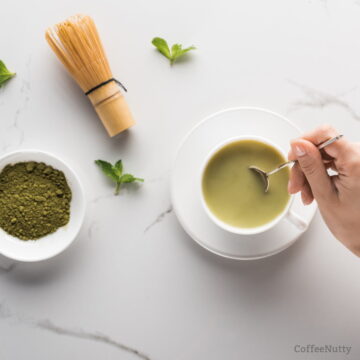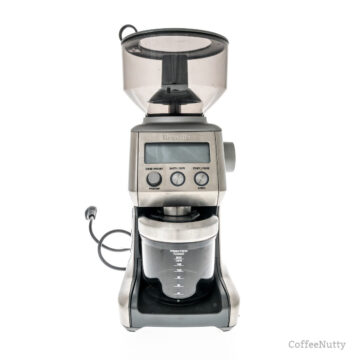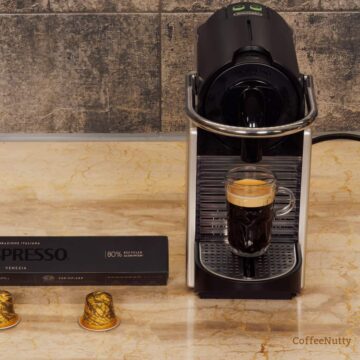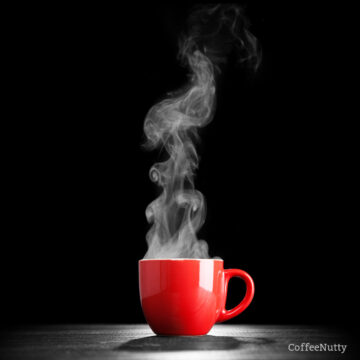Although both very popular, chocolate and coffee are two completely different things. However, they are more similar than you might think, both in how they are made and in their chemical composition. For one, chocolate is usually eaten as a dessert, while coffee is the fuel that many working adults need to get through their day-to-day lives.
Chocolate contains 20 milligrams (0.0007 oz) of caffeine, while coffee has a higher caffeine content than chocolate with approximately 95 milligrams (0.003 oz) of caffeine per cup. Of course, the caffeine content of chocolate varies considerably with the different kinds of chocolate.
To learn more about these fantastic products and which one will be ideal for your afternoon pick me up, we’ll discuss the similarities between the two plants, their preparation processes, and what their nutritional differences are.
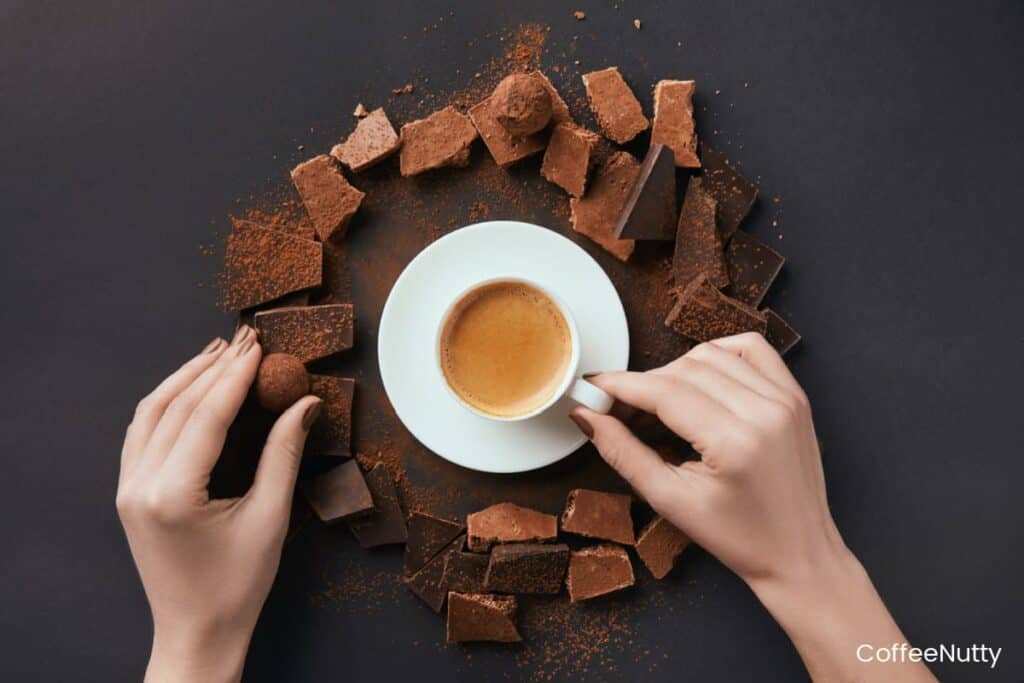
Caffeine Content In Both
While both chocolate and coffee contain caffeine, the caffeine levels can vary significantly based on how the products are produced and prepared for consumption.
The average 8-ounce cup (237 mL) of coffee contains approximately 95 milligrams of caffeine (0.003 oz), and many Americans end up drinking way more than an eight-ounce cup!
In most coffee shops, the average coffee drink ordered contains 16 oz (473 mL) of coffee.
That equals anywhere from 200-300 milligrams (0.007 to 0.01 oz) of caffeine, depending on how strongly the coffee is brewed.
Then, of course, there’s our dear espresso which, despite its small size, 1 oz (30 mL), a single shot of espresso typically contains 75 mg of caffeine (0.003 oz).
There is also the option of getting decaffeinated coffee if you love the taste.
But that takes away much of the appeal of coffee for many, as coffee is some individual's energy drinks.
For reference:
- An 8 ounce cup of black tea contains 47 mg of caffeine. If using tea leaves, keep in mind the caffeine amount will increase the longer the leaves sit in hot water.
- Brewed green tea (8 oz) contains 28 mg of caffeine.
- A 12-ounce soft drinks such as Coke, contains 34 mg of caffeine per 12 oz. can.
- Chocolate-covered espresso beans contain 6-13 mg of caffeine per bean.
On the other hand, Chocolate by itself tends to contain way less caffeine. There are four main types of chocolate:
- Dark
- Semi-sweet
- Milk
- White
Dark chocolate contains the highest percent cocoa, so it contains the most caffeine, while white chocolate, which contains no cocoa, has no caffeine present.
A 3.5-ounce bar (103.5 mL) of regular dark chocolate will have about 70 milligrams (0.002 oz) of caffeine, just slightly less than espresso. On the opposite end of the spectrum, a 3.5 oz (103.5 mL) serving of milk chocolate, the most popular, typically contains only 20 milligrams (0.0007 oz) of caffeine.
A 6-ounce cup of hot chocolate / hot cocoa contains approximately 5 mg of caffeine.
A 1-ounce square of unsweetened baking chocolate contains 23 mg of caffeine.
RELATED: The Best Coffee Beans for Cold Brew
How Coffee Is Prepared
Coffee beans, despite the popular name, should actually be called seeds.
Here is how coffee is prepared:
- They are harvested from the fruit of the coffee plant, then taken off to be processed.
- After they are removed from the fruit’s pulp, they are laid in the sun to dry.
- Once they are thoroughly dried, they are husked then exported, where professional tasters will test them to determine quality. If they are good enough, they will be roasted, then packed and sent off to be sold in stores worldwide.
- Once it is time to prepare the coffee, the seeds are ground, if they didn’t come pre-ground.
- Hot water is forced through the grounds. This can be done in a variety of ways depending on what culture is preparing the coffee.
- The liquid that comes out the other side is considered coffee and is then prepared with milk, sweeteners, sometimes chocolate, or nothing at all.
RELATED: Does Strong Coffee Mean More Caffeine?
How Chocolate Is Prepared
Chocolate has a slightly more complicated preparation process.
It starts similarly to coffee as the seed (cocoa beans) come from a plant known as cacao trees. Note cacao beans are beans that have not been roasted while cocoa beans have.
Here’s how chocolate is prepared:
- When the fruits are ripe, they are harvested, and the seeds are removed from the fruit. The fruit is often eaten separately.
- After the seeds are removed, they are fermented for around a week.
- Once the fermentation process is complete, they are dried and roasted to prepare them for being shipped all around the world.
- Once they have been shipped to their respective chocolate factories, the seeds are ground down into smaller pieces known as cacao nibs.
- The nibs are then processed further into either cocoa powder or chocolate liquor. At this point, the processors will mix in the sugar and milk, depending on the type of chocolate.
- Once it is thoroughly mixed, the chocolate is poured into molds, cooled, and it comes out a chocolate bar.
RELATED: Does Pour Over Coffee Contain More Caffeine?
Pros and Cons of Coffee
While you might think that coffee is the best thing since sliced bread, there are some pros and cons that you might want to consider with your caffeine intake. Let’s take a look at them now.
Pros of Coffee
- Coffee contains higher quantities of caffeine.
- It is anti-diabetic.
- It improves cognitive function.
Cons of Coffee
- It can disrupt sleep cycles.
- It can increase cortisol, a stress hormone, levels.
- Coffee can irritate the digestive tract.
- The acid damages and stains teeth.

RELATED: Does Aeropress Coffee Have More Caffeine?
Pros and Cons of Chocolate
Chocolate is a very delicious confection, but it does have some disadvantages, mainly that of being too high in sugar. However, if you find chocolate that is sweetened with Stevia, you might have the perfect snack.
Regardless, let’s take a look at the pros and cons of chocolate.
Pros of Chocolate
- It contains antioxidants.
- It is a good source of iron, magnesium, copper, and manganese.
- It can help satisfy sweet cravings.
Cons of Chocolate
- It often contains high amounts of sugar, unless you choose stevia-sweetened chocolate like Lily’s, found on Amazon.com. This chocolate tastes almost like a Hershey’s bar.
- It has lower levels of caffeine
RELATED: Why Does Some Coffee Taste Nutty?
Which One Should You Choose?
If you’re looking for a morning beverage that will get you through your workday and doesn’t contain a ridiculous amount of sugar, then coffee is probably the way to go.
In its natural form, meaning with no added milk, creamers, or sugar, it has no calories and has some beneficial antioxidants. However, keep in mind that if you choose to add anything to it, much of the nutritional value is lost and replaced by empty calories.
If you want an afternoon treat that will boost your energy by a bit but not enough to disrupt your sleep, then chocolate may be the perfect snack. In its natural state, just like coffee, it is considered very healthy.
However, the difference is that it is pretty darn hard to find chocolate without at least a little bit of sugar, plus the flavor isn’t exactly appealing if no sweetener has been added. It contains loads of beneficial antioxidants as well as vitamins and minerals.
As long as you are sticking to dark chocolate, you can rest assured that you receive maximum benefits with minimum adverse side effects.
RELATED: Comparing Caffeine in Coffee vs. Earl Grey Tea
Conclusion
Chocolate and coffee have their advantages and disadvantages and depending on your lifestyle, you may prefer one over the other.
Dark chocolate can be a fantastic and relatively healthy sweet treat that provides you with a bit of an energy boost and some healthy fats and antioxidants. On the other hand, coffee contains way more caffeine but reduced levels of other beneficial nutrients.
All in all, they provide a similar effect, just with different strengths.
RECOMMENDED:

